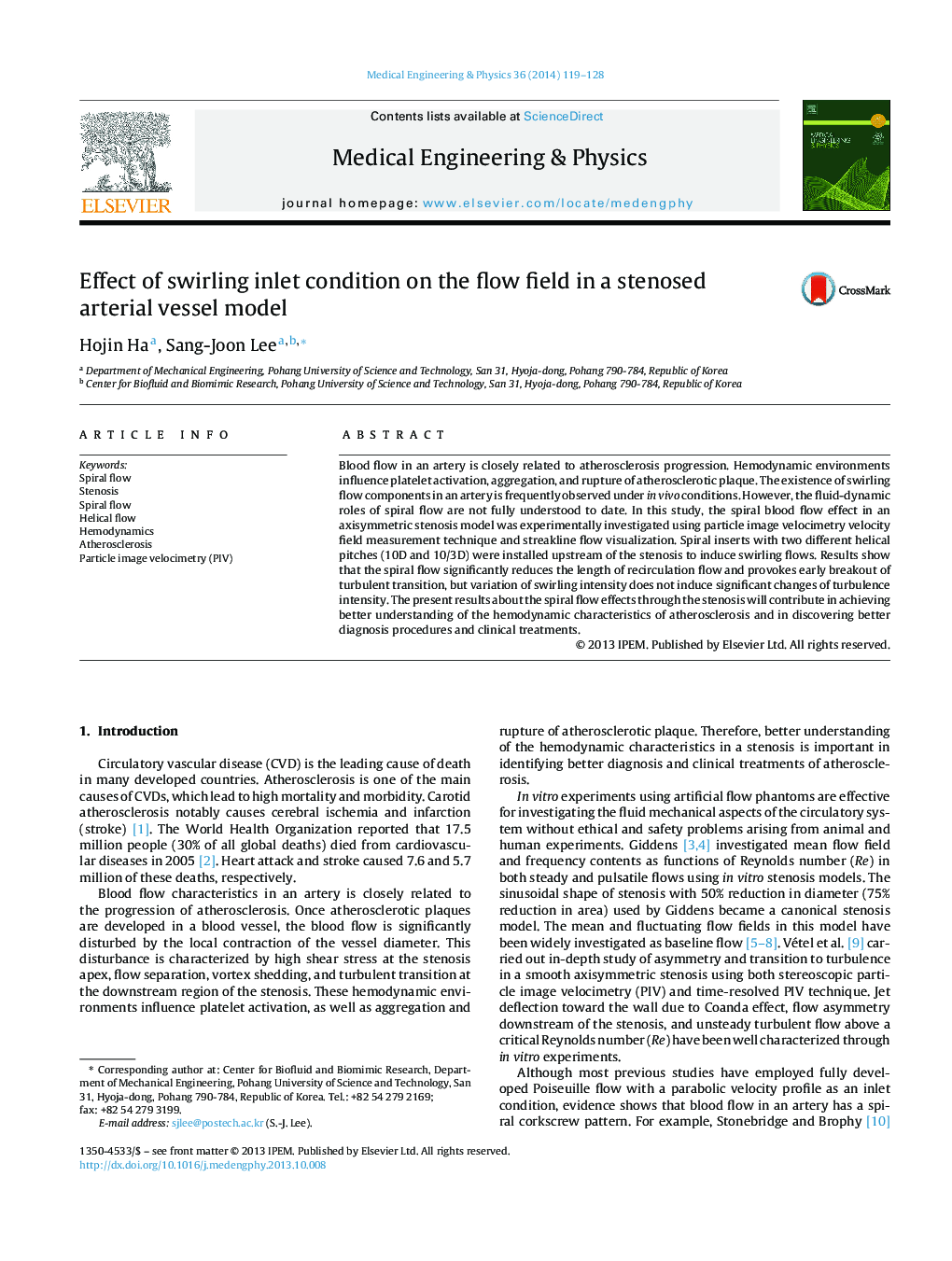| Article ID | Journal | Published Year | Pages | File Type |
|---|---|---|---|---|
| 876152 | Medical Engineering & Physics | 2014 | 10 Pages |
Blood flow in an artery is closely related to atherosclerosis progression. Hemodynamic environments influence platelet activation, aggregation, and rupture of atherosclerotic plaque. The existence of swirling flow components in an artery is frequently observed under in vivo conditions. However, the fluid-dynamic roles of spiral flow are not fully understood to date. In this study, the spiral blood flow effect in an axisymmetric stenosis model was experimentally investigated using particle image velocimetry velocity field measurement technique and streakline flow visualization. Spiral inserts with two different helical pitches (10D and 10/3D) were installed upstream of the stenosis to induce swirling flows. Results show that the spiral flow significantly reduces the length of recirculation flow and provokes early breakout of turbulent transition, but variation of swirling intensity does not induce significant changes of turbulence intensity. The present results about the spiral flow effects through the stenosis will contribute in achieving better understanding of the hemodynamic characteristics of atherosclerosis and in discovering better diagnosis procedures and clinical treatments.
